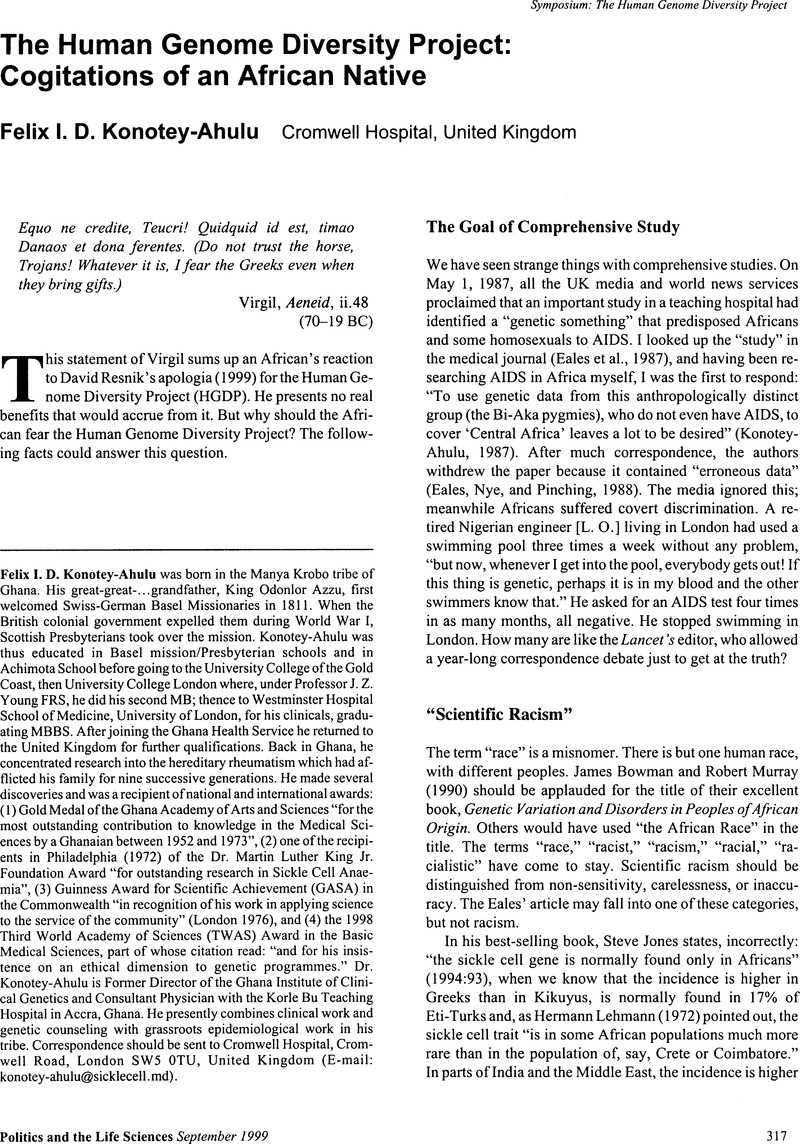Crossref Citations
This article has been cited by the following publications. This list is generated based on data provided by Crossref.
Hasian, Jr., Marouf
and
Plec, Emily
2002.
The Cultural, Legal, and Scientific Arguments in the Human Genome Diversity Debate.
Howard Journal of Communications,
Vol. 13,
Issue. 4,
p.
301.
Hasian, Jr., Marouf
and
Plec, Emily
2002.
The Cultural, Legal, and Scientific Arguments in the Human Genome Diversity Debate.
Howard Journal of Communication,
Vol. 13,
Issue. 4,
p.
301.
Konotey-Ahulu, Felix ID
2007.
Need for ethnic experts to tackle genetic public health.
The Lancet,
Vol. 370,
Issue. 9602,
p.
1826.





